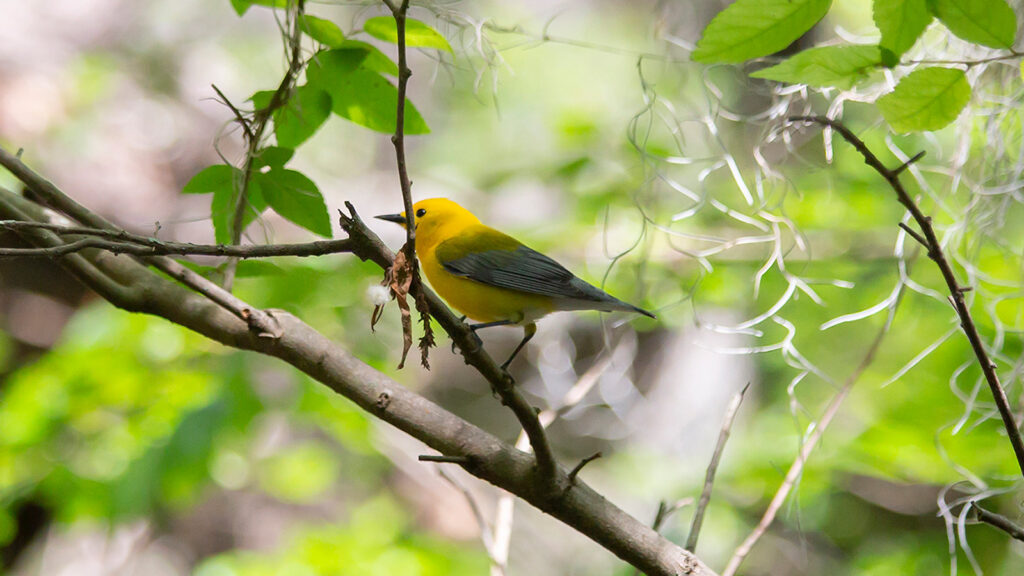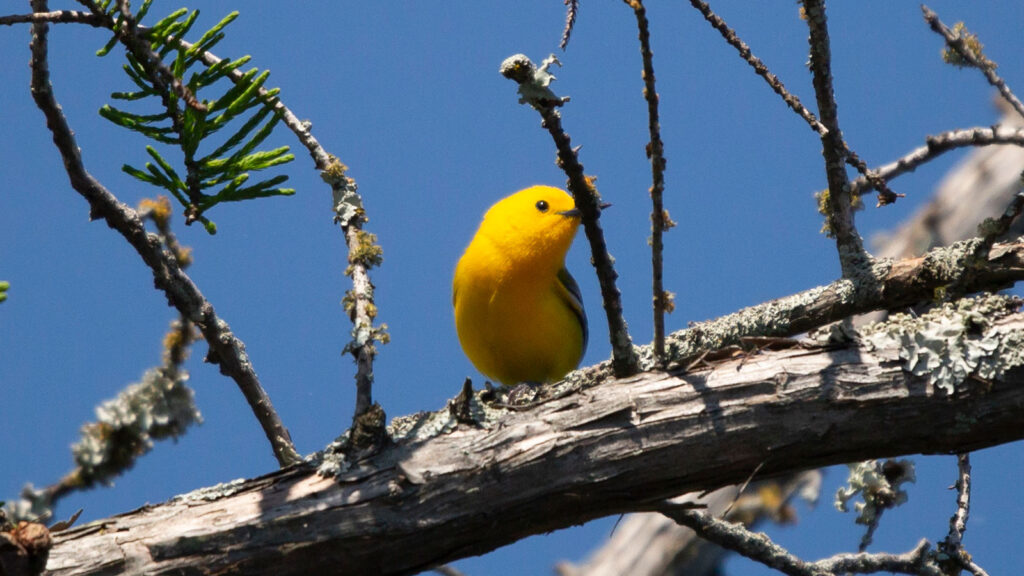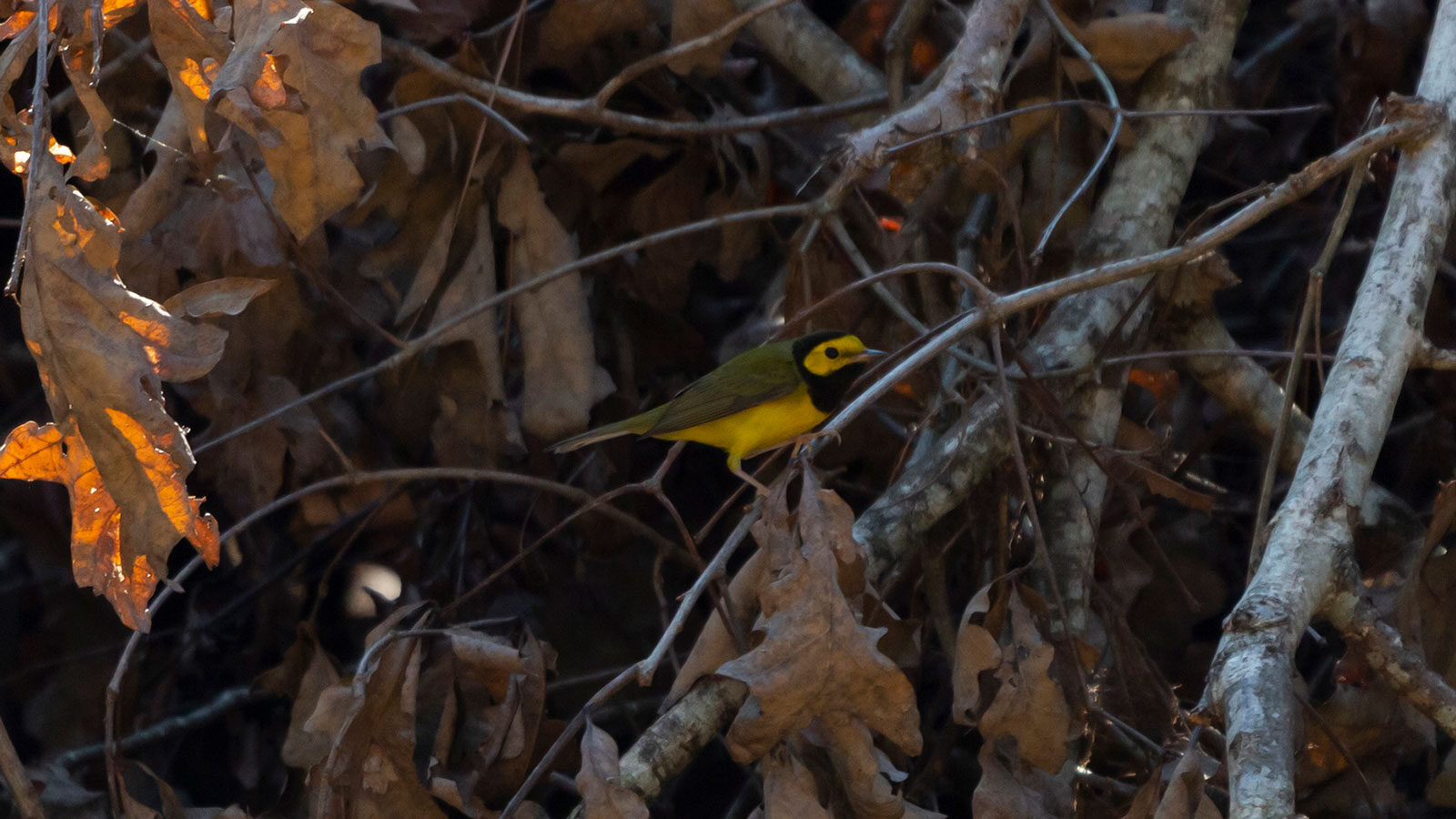
Did you know that the prothonotary warbler is one of two warbler species that nests in dead tree cavities?
Prothonotary Warblers
at
a Glance
Key Features:
Male prothonotary warblers are yellow with blue-gray wings and tails. Females are paler than males.
Least Concern - Population Decreasing
Habitat:
Bottomland forests, swamps, and near lakes and streams
nesting habits:
Prothonotary warblers build their nests in the cavities of dead trees out of cypress bark, grass, leaves, moss, rootlets, and sedges.
seasons prothonotary warblers are active in our area:
Summer
Diet:
Insects, snails, spiders, and seeds
hunting Behavior:
Prothonotary warblers forage by hopping from branch to branch or on the ground.
commonly confused with:
Hooded Warblers

Prothonotary warblers are often confused with male hooded warblers due to both being yellow birds.

Prothonotary warblers have yellow heads while hooded warblers have black on their heads.